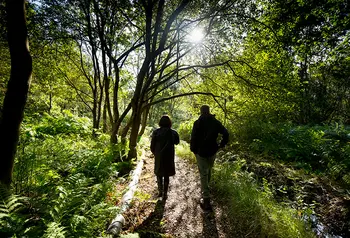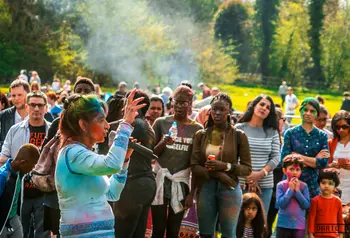How green spaces can improve our wellbeing

It’s good to be asked to write this blog to coincide with the publication of the Space to Thrive report. I want to use it to bring together my personal and professional experiences of why parks are so important for our mental health and wellbeing.
I am lucky enough to live in Ealing, once known as the Queen of the Suburbs. It is one of London’s greenest boroughs for one predominant reason – its parks. You can walk, run or cycle through Pitshanger, Perivale and Brent Valley parks barely touching a road, and then onwards to Lammas and Walpole before heading south to Gunnersbury. The latter was purchased from the Rothschilds by local government in 1926 and is now home to a weekly Parkrun among very many other activities. Incidentally, both have recently been regenerated thanks to National Lottery funding.
"Green space within easy access of your front door, enabling (and sometimes encouraging) mild, moderate, or occasionally extreme physical activity, but also a chance to think and to exist."
The attractions are clear – green space within easy access of your front door, enabling (and sometimes encouraging) mild, moderate, or occasionally extreme physical activity, but also a chance to think and to exist. In particular, an opportunity to engage with the nature on your doorstep – the sight of a woodpecker or a beautiful tree can lift the spirits.
A place to escape
For me, my local parks are vital for my wellbeing. They are the place I go to escape, to decompress. When our children were young, we spent endless hours in all weathers enjoying the freedoms the park gave them to run and express themselves. When my wife died, I walked across many parks coming to terms and grieving.
I believe that parks do the same for much of our population. This important report highlights this. It shows that physical health, mental wellbeing and life satisfaction are all enhanced through access to and use of parks and green spaces.
As the report recommends, parks should be seen as social as well as physical infrastructure so funders should support the activities that animate green spaces as well as the spaces themselves. To mark the New Year, I am doing RED January – it’s a mass participation and fundraising activity for Mind that helps us to be physically active every day in the coldest month. There will be many RED January T-shirts underneath layers of clothes.
The importance of quality parks
Access to green space is important but the quality of green spaces has a stronger bearing on health outcomes. It’s clear that parks create important opportunities for social integration, but they can amplify social divisions and may exclude social groups if they feel unsafe. It’s important that everyone feel welcome to use them fully.
"We have to consider the role of parks in our approach to mental health at a wider policy level."
We have to consider the role of parks in our approach to mental health at a wider policy level. As the stigma around mental health continues to be eroded, we can start to think about how we can all look after our own mental health. This requires a cross-governmental approach which makes use of all our community assets. Our Ecominds project showed the positive impacts on bringing together green spaces and support for our mental health. There is now an opportunity to think about the role of parks in social prescribing and enabling access individually and in groups.
Perhaps to mark the new decade, we should encourage the new government to create a truly cross-system plan to improve our mental health, which puts some of our most loved, and most needed, green spaces at its heart.
Find out more
Read the first stage of the Space to Thrive report, produced with The National Lottery Community Fund. The second part of the report will be published later this year.
These four parks, funded by The National Lottery Heritage Fund, put wellbeing at their heart: Beddington, Boultham, Rhyddings and Levengrove.
Follow Paul on Twitter, or find out more on the Mind website.


